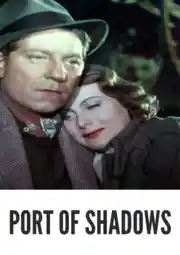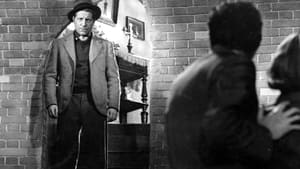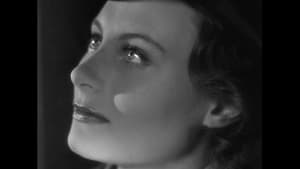Contact: [email protected]
Video Sources 0 Views

Synopsis
[ez-toc]





Introduction
In the dynamic realm where the antiquity of old films collides with the vibrancy of modern cinematic technology, the art of colorization emerges as a transformative force. This article delves into the captivating universe of colorized movies, casting a spotlight on the 1938 French film “Port of Shadows Colorized.” Through the lens of AlwanFilm, the trailblazers of film colorization, we embark on a journey to explore the intersection of film restoration and colorization, delving deep into the impact of this contentious practice on an age-old cinematic masterpiece.
Read Media File Transfer Agreement: Terms and Conditions
Read FAQ
The Intersection of Film Restoration and Colorization
Film preservation stands as an indispensable pillar of cultural heritage, a means to revisit the masterpieces that shaped the cinematic landscape. However, the ongoing debate surrounding colorization reveals a schism among film enthusiasts. Advocates argue that it breathes new life into old films, rendering them more appealing to modern audiences, while detractors insist it jeopardizes the original artistic integrity of black-and-white classics.
“Port of Shadows Colorized 1938” finds itself at the crux of this debate, compelling us to reflect on the delicate equilibrium between preserving the past and embracing the tools of the present. AlwanFilm, renowned for their meticulous restoration work, undertakes the challenge of infusing color into this timeless French film noir.
Understanding “Port of Shadows” in its Original and Colorized Forms
French film noir, with its enigmatic aesthetics and gritty narratives, found an exquisite manifestation in “Port of Shadows Colorized.” The original black-and-white version, helmed by director Marcel Carné, stands as a testament to the visual prowess of its era. As we navigate the intricacies of the film noir genre within French cinema, the pivotal question emerges: can colorization enhance or detract from the quintessential noir elegance?
The original cinematography, characterized by stark contrasts and dramatic lighting, plays a pivotal role in crafting the brooding atmosphere synonymous with film noir. Proponents of preserving the original argue that the absence of color contributes to the mystique, allowing viewers to immerse themselves in the enigmatic world the film paints.
The Process of Colorizing “Port of Shadows Colorized” by AlwanFilm
AlwanFilm’s approach to colorization unveils a meticulous and nuanced process. Their dedication to preserving the authenticity of the original while injecting a new layer of visual depth is palpable. Yet, the challenges encountered during the colorization of “Port of Shadows Colorized” warrant exploration. From capturing the subtleties of shadow and light to ensuring the precision of period-specific colors, the odyssey of colorizing an old film demands both technical expertise and artistic intuition.
Analyzing the Color Palette and Visual Enhancements in the Colorized Version
The introduction of color to “Port of Shadows Colorized” heralds a new dimension to storytelling. The color palette assumes the role of a silent narrator, subtly influencing the audience’s emotional connection to the characters and their plight. The strategic use of color symbolism amplifies narrative elements, directing attention to pivotal details that might have been overshadowed in the original black-and-white iteration.
From the warm glow of a streetlamp to the cold, muted tones of an alley, each color choice contributes to the film’s atmosphere. The visual enhancements not only contemporize the viewing experience but also offer a renewed perspective on the motivations and relationships of the characters.
The Legacy of “Port of Shadows Colorized” and Its Reimagining in Color
The release of a colorized version invariably ignites debates within the film community. Does it dilute the legacy of the original or breathe new life into a timeless classic? “Port of Shadows,” in both its original and colorized incarnations, continues to etch an indelible mark on French cinema. Does the colorized rendition impact its standing among critics and scholars?
The enduring legacy of “Port of Shadows Colorized” intimates that, irrespective of the colorization debate, its influence on contemporary filmmakers and storytelling techniques endures. As we scrutinize its legacy, we unearth how this film, whether in its original or colorized form, continues to shape the landscape of French cinema.
Other Examples of Significant Colorized Films
While “Port of Shadows Colorized” stands as a compelling example, numerous other films have undergone the transformative process of colorization. Each film carries a unique narrative, showcasing varying approaches to the colorization technique and its impact on bringing old movies to life for a new generation of viewers.
Take, for instance, the iconic “It’s a Wonderful Life” or the timeless “Casablanca,” both of which have experienced a resurgence in popularity due to colorization. The debate surrounding colorization extends beyond individual films, evolving into a broader discourse on how technology can shape our perception of cinematic classics.
The Debate Continues: Artistic Integrity vs. Technological Advancement
The contentious debate surrounding film colorization persists. On one side of the spectrum, proponents argue that colorization serves as a vital tool for preserving cinematic heritage, breathing new life into films that might otherwise fade into obscurity. On the opposing end, critics contend that colorization constitutes a form of artistic infringement, compromising the director’s original vision and the film’s historical authenticity.
The ethical dilemma becomes pronounced when considering whether colorization is a necessary evolution or an unwarranted intrusion into the artistic sanctity of classic cinema. As we navigate this debate, it becomes evident that the intersection of artistic integrity and technological advancement remains a nebulous terrain.
Embracing the Dual Nature of Film: Appreciating Both Black-and-White and Color Cinema
Amidst the fervent debates, it is crucial to recognize the dual nature of film—appreciating both black-and-white and color forms. Each format offers a distinct aesthetic, a unique lens through which stories unfold. While the debate rages on, viewers are encouraged to embrace the richness of both worlds, acknowledging the unparalleled charm of the classic black-and-white masterpieces alongside the vivid allure of their colorized counterparts.
Balancing preservation with innovation becomes imperative as we navigate the evolving landscape of cinematic appreciation. Just as literature is preserved in various editions, each offering a unique interpretation, so too can films exist in both their original and colorized forms, providing audiences with choices that suit their preferences.
Conclusion
In conclusion, colorized movies emerge as a form of cinematic art that invites us to rediscover and reassess classic films. “Port of Shadows Colorized 1938” serves as a poignant example of this transformative process, blending the noir elegance of French cinema with the vibrancy of modern technology. As we encourage readers to seek out “Port of Shadows Colorized” in both its original and colorized versions, we prompt them to engage in their own analysis of how colorization influences their interpretation of the film.
In this digital age, where the line between preservation and innovation blurs, the value of colorized movies becomes increasingly apparent. While debates on artistic integrity persist, the use of innovative technologies like colorization ensures the relevance of old films for generations to come. The delicate dance between preserving the past and embracing the future continues, and “Port of Shadows Colorized 1938” stands as a testament to the enduring allure of cinematic masterpieces, regardless of the palette in which they are presented.




















